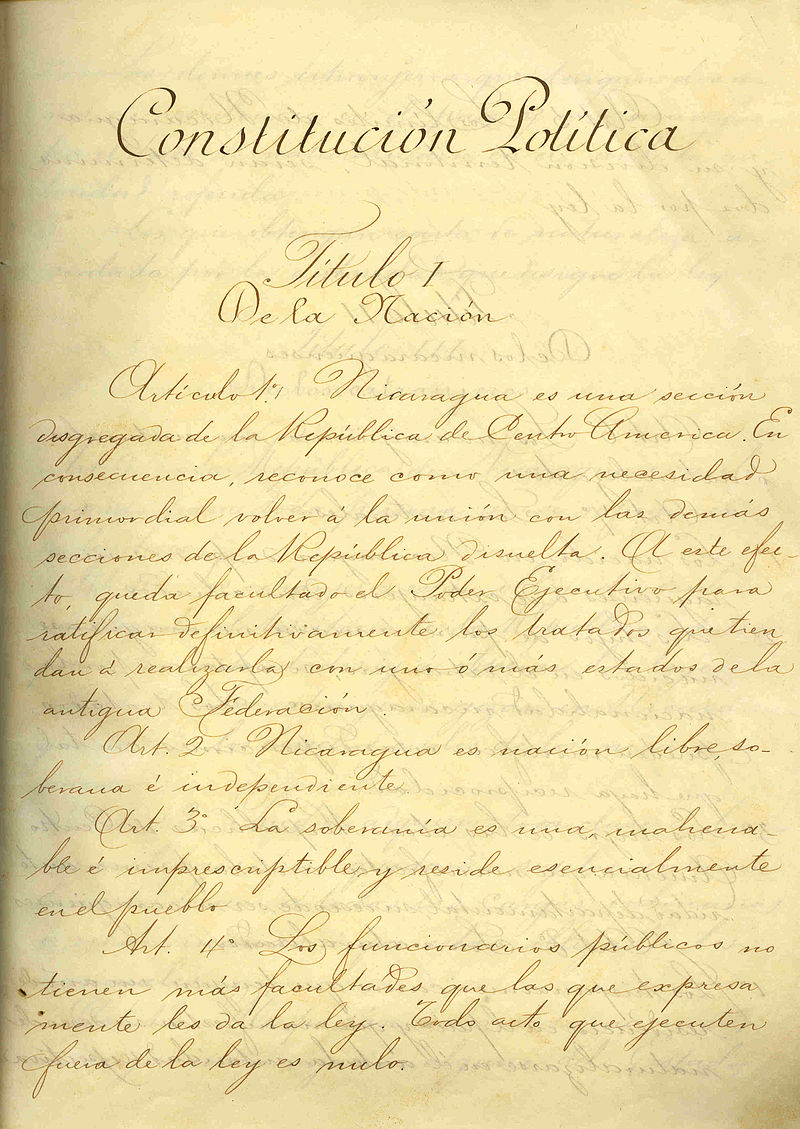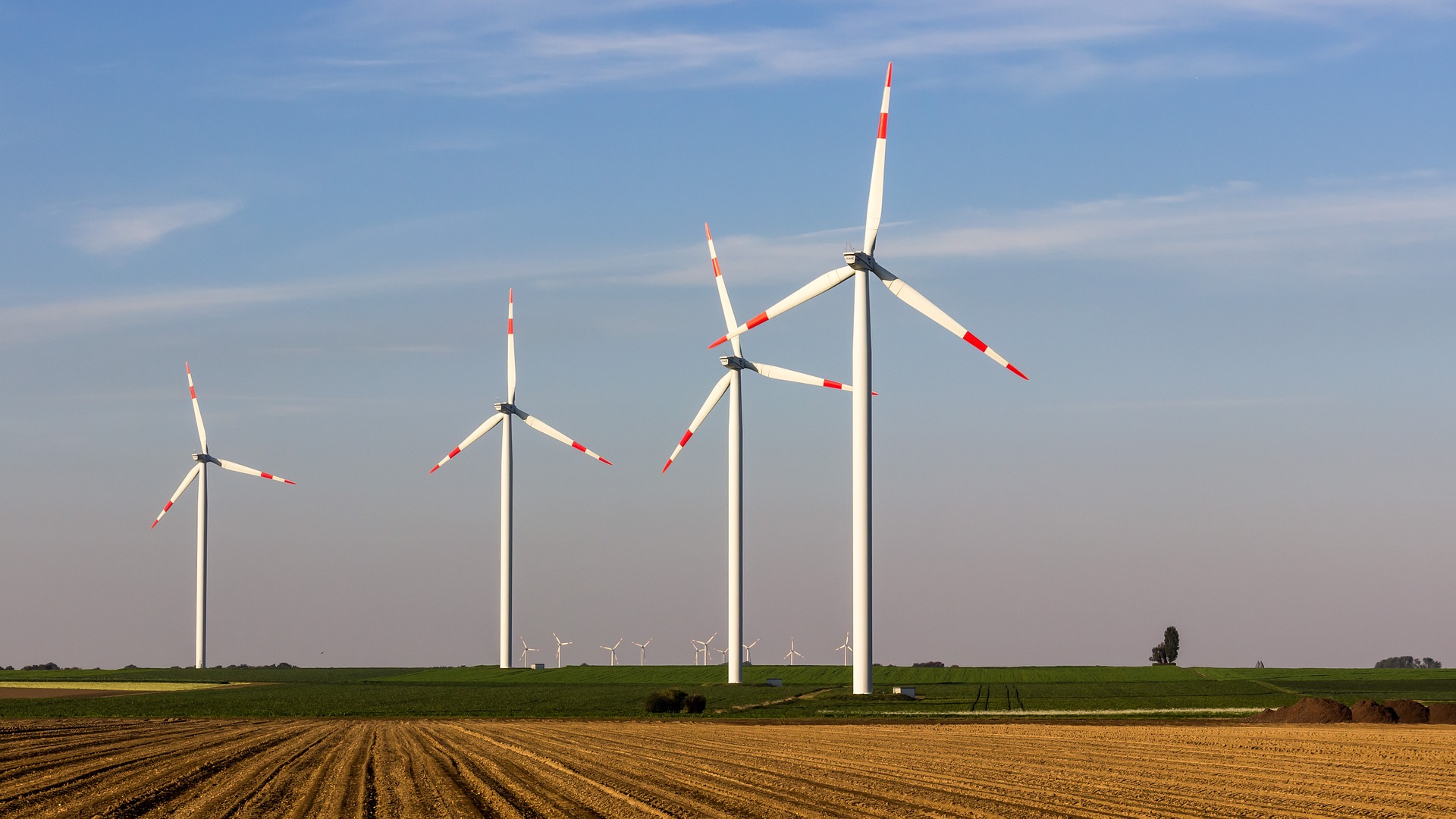Updating Constitutions: Leaving Space for Future Generations

Share this Post
Many constitutions that have been adopted or amended in the last few decades address the aim of long-term thinking by referring specifically to the rights of future people or the duties of today’s citizenry towards posterity.[1] These newly inserted clauses may be termed ‘posterity protection provisions’ (PPPs).[2] Thematically, most of these clauses fall into one of the following three categories: general PPPs, environmental PPPs and financial PPPs.[3] Examples for financial PPPs are the ‘debt brakes’ recently adopted by several European countries. The constitution of Poland, for instance, limits the level of national public debt to three-fifths of GDP.[4] Even more frequently, environmental PPPs have seen the light of day. Using the new Constitute Project’s database, Elizabeth Dirth has scrutinized environmental posterity protection provisions and more general provisions about sustainable development in all the constitutions of the world. She found that in 120 countries the constitutions make some kind of reference to this.[5] She categorized these provisions into a) individual rights to a healthy environment (74 cases), b) non-binding environmental clauses (58), c) explicit mention of future generations (37), d) explicit mention of the right of future generations to the environment (7), e) more elaborate legal provisions (33), f) clauses enabling further legal or policy frameworks to develop (46), and finally g) citizens’ responsibility clauses (59).[6]
Most of the environmental PPPs are enshrined as individual rights; this follows the rationale that protecting the environment for today’s generation is also good for future generations. Some others are enshrined as statements of public policy, often in preambles, and hence function as a guide for public policy-making. These environmental PPPs formulate an obligation of the state, as they are based on the assumption that there is a potential conflict of interests between present and future generations because of the fact that today’s generations can benefit by burdening future generations. These provisions usually mention future generations explicitly and underline the state’s responsibility to them.
Some other constitutions however, for instance the constitution of the US, have not changed. Can this be explained by the different values societies place on the environment? I will argue here that whether ‘green rights’ are enshrined in a country’s constitution is the deliberative decision of a current generation only, if previous generations also granted their successors constitutional self-definition. To put it simply: The variable ‘constitutional design’ makes a big difference.[7] Some written constitutions require three-fourths (or even four-fifths) legislative super-majorities, others just two-thirds super-majorities. Some, in order to be changed, require concurrent majorities of different houses of the legislature, or concurrent votes of two different legislatures with an intervening election between these votes, or popular referenda; and some constitutions have eternity clauses.[8]
There seems to be no dearth of competing ideologies and theories about the environment out there but this may obscure a more important undercurrent. The underlying trend is pro-environment. People become more and more aware that we live on a small, vulnerable planet and need to respect global boundaries. But constitutional designs might prevent this value change to materialize in positive law. There is no perpetual constitution anywhere in the world. However, the number of ‘very-difficult-to-change’ constitutions does not seem to shrink and this is not only a problem for the citizens that live under the jurisdiction of such constitutions, but for the world at large because many environmental problems, notably climate change, are global problems. These global environmental challenges are a growing concern for more and more citizens in the world but some of them have serious difficulties enshrining their ‘greener’ value sets in their national constitutions.[9]
Constitutions as intergenerational documents
By their very nature, constitutions are intergenerational documents because they intend to place certain questions beyond the reach of simple majorities, the components of which change frequently. In Western thought, constitutions are usually seen in a very favorable light. People in the West are used to thinking of constitutions as devices which entrench democratic rules and fundamental rights. But this might be a parochial view. Taking a global view, one cannot ignore the fact that almost all semi-democratic and authoritarian states are constitutionalized. Outside the West, the relationship between constitutionalism and democracy is quite different from that depicted in textbooks, which usually state that constitutions (even very rigid ones) are a good thing in all respects.
Veneration for constitutions (and constitution-making events) should not obscure the fact that each constitution is man-made. Drawing on the common division between polity, policy and politics, constitutions are usually regarded as part of polity. This view neglects that constitutions (like all other political institutions) are “clotted” politics. Before they came into existence, politicking happened. As Pitkin writes: “[C]onstitutions are made, not found. They do not fall miraculously from the sky or grow naturally on the vine; they are human creations, products of convention, choice, the specific history of a particular people, and (almost always) a political struggle in which some win and others lose.”[10] The winners in these battles become framers of a constitution. But a framer’s generation should be aware of their own fallibility. It is nothing less than hubris for a generation to pretend to be able to determine which institutions will be the most appropriate for a future they cannot know.[11] The future is unknown to every current generation. New worldwide trends that give rise to the need for reform of the constitutional state can come to the fore anytime.
Take for instance the ecological crisis. There is empirical evidence that man has profoundly changed the appearance of the earth, so much that scientists are now speaking of the beginning of a new geological period, the Anthropocene.[12] As a result of urbanisation, large areas are covered by a mixture of concrete, glass and metals. Even if humankind were to go extinct tomorrow, those structures would remain where they are for millennia to come. If in a few thousand years geologists were to visit the place where a large city is located today, they would discover fragments of concrete, rusted iron, the bitumen of roads, glass from fibre optic cables, and an enormous amount of aluminium which as such is not found in nature. Another signature of humankind is the non-decomposing layer of plastic garbage currently floating in the maelstrom of certain ocean drifts. There is evidence suggesting that they create sedimentary deposits after subsiding. In mid-2014, geologists discovered structures formed by plastics, volcanics, coral fragments and sand grains off the coast of Hawai’i which, in view of their solidness, they labelled as a stone of its own kind – as plastiglomerate.
Humankind also creates new sedimentary structures by ablating mountains, filling up valleys, and impounding huge seas. Three-quarters of the ice-free mainland are no longer in the state they used to be in when the human species emerged. The shift from wilderness to grasslands in particular is an important marker of the enormous changes humanity has brought upon the Earth’s surface. While the proportion of non-wilderness was minimal 12,000 years ago, more than a third of the Earth’s surface is being used as grassland for livestock. If one were to place all mammals on a huge scale, one could figure out that humans and their livestock accounted for 0.1 percent of all biomass at the beginning of the Holocene, while today this share has grown to 90 percent of all biomass.[13]
To sum up, the conditions in which people live now in the Anthropocene are, in fact, very different to those of the Holocene and constitutions should reflect the responsibility current generations carry for leaving a habitable planet for their ancestors.
Similar to changing circumstances, a change in the values of a people can justify a revision of a constitution. Alongside growing environmentalism (as a underlying trend) in virtually all states of the world, another sign of the historical expansion of humanism and tolerance may be seen in the spread of emancipated values coined, by and large, during the Enlightenment. For instance, the death penalty was once applied worldwide to hundreds of misdemeanors (like stealing apples) in gruesome, public spectacles of torture and humiliation.[14] Eventually, the most horrible methods of execution were abolished in most parts of the world.[15] When the Universal Declaration of Human Rights inaugurated a second humanitarian revolution 70 years ago, capital punishment was abolished altogether in several countries, especially after the 1970s.[16] In 2018, Amnesty International recorded a decrease of 31 percent executions compared to 2017 which is a historic low (while still too high, of course).[17] As with environmentalism, the rift between the constitutional possibilities and the reality of values shows up here too: While 92 countries retain capital punishment in their constitutions and law books, only 33 have carried out an execution in the last decade.[18] The political scientist Christian Welzel constructed an “emancipative values index” based on data from the World Value Survey. This index comprises gender equality (whether people feel that women should have an equal right to jobs, political leadership and university education), personal choice (whether they feel that divorce, homosexuality and abortion may be justified), political voice (whether they believe that people should be guaranteed freedom of speech and a say in government, communities and the workplace) and child rearing philosophy (whether they feel that children should be encouraged to be obedient or independent and imaginative).[19] This index is on the rise on a global scale.
It is not surprising that there are substantial differences between different cultural zones. The Protestant countries of Western Europe, such as the Netherlands and Scandinavia, are the world’s most liberal, followed by Canada, the United States and Australia. The world’s most illiberal region is the Islamic Middle East. However, in the context of this research, what is more relevant than the absolute differences in values is the trend towards more and more liberal societies. In every part of the world, people have become more liberal. For instance, young Muslims in the Middle East today are as liberal as young people in Western Europe in the early 1960s. These changes in values would be reflected in subsequent changes of constitutions all over the world unless hindered by eternity clauses or other legal mechanisms that make it difficult or nearly impossible to change a constitution.[20] Human beings are no angels and will never be. But there are signs of moral progress if we take a bird’s eye perspective.[21]
Thomas Jefferson himself expressed his belief in the progress of the human mind in a letter to Samuel Kercheval dated 12 July 1816:
“I am certainly not an advocate for frequent and untried changes in laws and constitutions. I think moderate imperfections had better be borne with; because, when once known, we accommodate ourselves to them, and find practical means of correcting their ill effects. But I know also, that laws and institutions must go hand in hand with the progress of the human mind [my emphasis]. As that becomes more developed, more enlightened, as new discoveries are made, new truths disclosed, and manners and opinions change with the change of circumstances, institutions must advance also, and keep pace with the times.”[22]
Moral progress might be expected to materialize in constitutional evolvement, unless stunted by onerous constitution-amending mechanisms. If a previous generation entrenches irrevocable rules and systems of government, they mistrust the sense of judgement of their successors.
Tacit consent
The argument of tacit consent is often invoked in constitutional theory. The “tacit consent” concept implies that as long as there is no voiced and open opposition by a majority against a constitution (or some of its clauses), it enjoys the support of the demos. Those who don’t articulate their dissent are counted as supporters for the status quo. This argument seems to provide a splendid justification for leaving constitutions unchanged for very long periods of time. John Locke was one of the classical proponents of the idea that individuals as free agents enter into consensual relationships with other free agents, and that this becomes the basis for political governance. As approval to this contract is not voiced explicitly, Locke adds the notion of tacit consent.[23]
However, tacit consent as an argument might not reach all that far. In a pluralistic society, you never have unanimous support for a constitution. There are always dissenters who want to change this or that constitutional provision. In practice, tacit consent is a gradual concept. A lot of people are ‘unpolitical’ in normal times. Whether there is a majority or a minority for an update of the constitution is not revealed as long as there is no decision-making on the agenda. The failure of success of the open dissenters must not be equated with the support of the whole citizenry for contested constitutional provisions.[24]
Political institutions are sticky because human-beings are rule-following animals by nature. They are biased in favor of the social norms that already exist. This gives an anthropological explanation for the odd fact that constitutional clauses survive even when values have changed or the circumstances for which these clauses were once created have disappeared. There is thus no even playing field for those who want to abolish outdated and problematic constitutional provisions and those who want to keep them, even if the former group is a (super)majority. Inertia plays into the hands of the existing system despite the fact that time goes on and the world changes.
To sum up, the conditions in which people live now in the Anthropocene are, in fact, very different to those of the Holocene and constitutions should reflect the responsibility current generations carry for leaving a habitable planet for their ancestors. There can be no doubt: constitutions are great inventions in the history of humankind. But this in itself does not defend “very difficult-to-change” constitutions. Every framer’s generation should offer constitutional content to its successors, not try to force it upon its children and grandchildren.
Israel Public Policy Institute (IPPI) serves as a platform for exchange of ideas, knowledge and research among policy experts, researchers, and scholars. The opinions expressed in the publications on the IPPI website are solely that of the authors and do not necessarily reflect the views of IPPI.
Footnotes
I am grateful to Paula Schäfer and Nathalie Alyon from IPPI for helpful comments.
[1] This section draws both on Tremmel, J. 2019. Whose constitution? Constitutional self-determination and generational change. Ratio Juris. Vol 32 (1), pp. 49-75, and on Tremmel J. 2006. Establishment of intergenerational justice in national constitutions. Ed J. Tremmel. Handbook of Intergenerational Justice, Cheltenham: Edward Elgar Publishing, 187-214.
[2] Clauses that are designed only for the purpose of protecting future generations and their respective interests are termed “intergenerational constitutional provisions” by Gonzalez-Ricoy, I. 2016. Legitimate Intergenerational Constitutionalism. Intergenerational Justice Review 2(2): 40-8. But I think this term is ambiguous, since basically all clauses of a constitution reach into the future and are thus in a certain way “intergenerational”. Therefore, I deem “posterity protection provisions” a clearer term for this very special kind of clause.
[3] Tremmel, J. 2009. A Theory of Intergenerational Justice. London: Earthscan, 57.
[4] Constitution of Poland (1997), art. 216 IV.
[5] Dirth, E. P. 2018. Governance for Future Generations: A Global Review of the Implementation of Intergenerational Equity. Master thesis. Utrecht University Repository. Faculty of Geosciences Theses. https://dspace.library.uu.nl/handle/1874/361333
[6] Art. L 110 b Const. of Norway, of 1992; art. 7 Bolivian Const., of 2002; art. 35 Const. of Morocco, of 2011; art. 39 Const. of Angola, of 2010; art. 32 of the Const. of Egypt, of 2014; art. 13 Const. of Malawi, of 1994 and art. 50 Const. of Iran, of 1979.
[7] For empirical evidence, see Elkins, Z., T. Ginsburg, T., and J. Melton. 2009. The Endurance of National Constitutions. Cambridge: Cambridge University Press.
[8] For classification schemes of constitutional change procedures, see Rasch, B. E., and R. D. Congleton. 2006. Amendment Procedures and Constitutional Stability. In Democratic Constitutional Design and Public Policy: Analysis and Evidence. Ed. R. Congleton and B. Swedenborg, pp. 319–42. Cambridge, MA: MIT Press; Elster, J. 2012. Clearing and Strengthening the Channels of Constitution Making. In Comparative Constitutional Design. Ed. T. Ginsburg, 15–30. Cambridge: Cambridge University Press, p. 101; Lane, J.-E. 1996. Constitutions and Political Theory. Manchester: Manchester University Press, p. 144.
[9] Unamendable clauses might even be on the rise, see Albert, Richard, and Oder, Bertil Emrah. 2018. An Unamendable Constitution? Unamendability in Constitutional Democracies. Cham: Springer.
[10] Pitkin, H. F. 1987. The Idea of a Constitution. Journal of Legal Education 37(2), p. 168.
[11] The Second Amendment of the US Constitution is a case in point: With changing circumstances and technological advances the impact of the Second Amendment has altered dramatically over time: a muzzle-loading musket is not the same as an AK-47 assault rifle, after all. The Second Amendment is also a case in point against the hope that the doctrine of a “living constitution” as proclaimed by scholars like David Strauss (2010) will soon materialize in the USA. The US Supreme Court has not taken into account changing values and circumstances when interpreting key constitutional phrases. In District of Columbia v. Heller (2008), the Supreme Court handed down a landmark decision holding that the Second Amendment protects an individual right to possess and carry firearms. In McDonald v. Chicago (2010), the court clarified its earlier decisions that limited the amendment’s impact to a restriction on the federal government. In Caetano v. Massachusetts (2016), the court reiterated its earlier ruling that the Second Amendment extends, prima facie, to all instruments that constitute bearable arms, even those that were not in existence at the time of the founding, and that its protection is not limited to only those weapons useful in warfare.
[12] The term “Anthropocene” was coined by ecologist Eugene F. Stoermer and effectively elaborated on by the climate researcher and Nobel Prize winner Paul Crutzen. At the 35th International Geological Congress in Cape Town (September 2016), the members of the subcommission voted almost unanimously in favor of changing the classification of geological epochs and of declaring a new world age – the Anthropocene.
[13] Note that this calculation refers to the biomass of mammals (including humans). The total biomass of crops cultivated by humans is estimated at ≈10 Gt C, which accounts for only ≈2% of the extant total plant biomass. https://www.pnas.org/content/115/25/6506
[14] Pinker, S. 2018. Enlightenment Now: The Case for Reason, Science, Humanism, and Progress. New York: Viking, part II (progress), chapter 14 (democracy).
[15] While the trend is clear it should not go unnoticed that in some countries that execute the death penalty the methods of execution are still gruesome (for instance stoning or whipping).
[16] The wording “No one shall be subjected to torture or to cruel, inhuman or degrading treatment or punishment” appears in Article 5 of the Universal Declaration of Human Rights adopted by the United Nations General Assembly on December 10, 1948.
[17] https://www.amnesty.org/en/latest/news/2019/04/death-penalty-facts-and-figures-2018/
[18] See Amnesty International. 2018. Abolitionist and Retentionist Countries as of July 2018 (PDF). https://www.amnesty.org/download/Documents/ACT5066652017ENGLISH.pdf. Countries are classified by Amnesty International as “abolitionist in practice” if they have not executed anyone during the past 10 years and are believed to have a policy or established practice of not carrying out executions, for instance because they made an international commitment not to use the death penalty.
[19] For details, see Welzel, C. 2013. Freedom rising: Human empowerment and the quest for emancipation. New York: Cambridge University Press.
[20] For some examples with regard to the constitutions of Islamic countries, see Tremmel 2019 (cf. footnote 1).
[21] Singer, P. 2011. The Expanding Circle: Ethics, Evolution, and Moral Progress. Princeton: Princeton University Press.
[22] Jefferson, T. 1905. The Works of Thomas Jefferson, Federal Edition. Vol. 12. Ed. P.L. Ford. New York and London: G.P. Putnam’s Sons. (Orig. pub. 1816.). http://oll.libertyfund.org/titles/808#Jefferson_0054-12_14, p. 11–2. Emphasis mine.
[23] “There is a common distinction of an express and a tacit consent, which will concern our present case. Nobody doubts but an express consent of any man, entering into any society, makes him a perfect member of that society, a subject of that government. The difficulty is, what ought to be looked upon as a tacit consent, and how far it binds—i.e., how far any one shall be looked on to have consented, and thereby submitted to any government, where he has made no expressions of it at all. And to this I say, that every man that hath any possession or enjoyment of any part of the dominions of any government doth hereby give his tacit consent, and is as far forth obliged to obedience to the laws of that government, during such enjoyment, as any one under it, whether this his possession be of land to him and his heirs for ever, or a lodging only for a week; or whether it be barely travelling freely on the highway; and, in effect, it reaches as far as the very being of any one within the territories of that government” (Locke 1823, “Essay Two,” chap. VIII, § 119, p. 157).
[24] See Tremmel 2019 (footnote 1) for a comprehensive discussion.
Israel Public Policy Institute (IPPI) serves as a platform for exchange of ideas, knowledge and research among policy experts, researchers, and scholars. The opinions expressed in the publications on the IPPI website are solely that of the authors and do not necessarily reflect the views of IPPI.
Share this Post

Herd immunity for the “infodemic”: There won’t be a vaccine for that
The Covid-19 pandemic is emphasizing the limitations of efforts taken by tech platforms to tackle dissemination of false…

The German Government wants to “dare more progress”: What does it mean for Green Tech in Germany?
As a major technology and industrial base, green technologies (green tech) and the companies producing them are important…

Human Cognition and Online Behavior During the First Social Media Pandemic
Accelerated Information Consumption on Social Media Throughout the COVID-19 Pandemic The COVID-19 pandemic is the first pandemic that…
